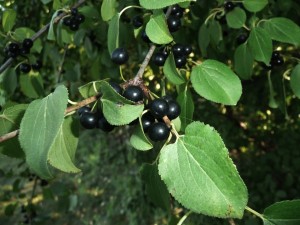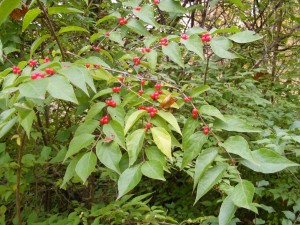You might think that winter is a dead period in which no outside work can be done. While this is true for the most part, there is one winter activity that can be performed and that is the removal of invasive shrubs. In our area, the most common invasive shrubs are Common Buckthorn (Rhamnus cathartica), Glossy Buckthorn (Frangula alnus), Autumn Olive (Elaeagnus ambelatta), Japanese Barberry (Berberis thunbergii), Black Locust (Robinia pseudoacacia), Multiflora Rose (Rosa multiflora), Amur Honeysuckle (Lonicera maackii), and others.
Most of these invasive species have been introduced by big horticulture for landscaping purposes. They have escaped into our natural areas and have become invasive because they do not have the predators that our native plants do. Thus, they are crowding out native plants because they can outcompete them for light, water, space, and nutrients. This results in habitat degradation since our native insects cannot use these plants for food and, in turn, cannot be food for higher order animals that depend on healthy and robust insect populations.
The process for removing these invasives is to cut them down as close to the ground as possible and treat the cambium layer of the stump with a 25% solution of glyphosate, which is the active ingredient in Round Up, within 10 minutes. This second step is necessary because there are vast root stores which will just produce new growth in the spring. It is nearly impossible to kill these invasive species without herbicides. By nearly impossible I mean that you could dig up the whole shrub, but this is impractical for larger infestations.
The window for removing these invasives is from late summer until the first of March. During this time, the shrubs are senescing, which means that nutrients, along with the herbicide, are being drawn down into the roots. At other times of the year, sap is flowing upward and herbicides are ineffective because they just get pushed out of the cut stumps.




